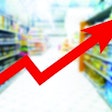
Though U.S. tariffs on imports from Canada and Mexico are currently on pause, they might come back; and higher tariffs on goods from China are now in place. This scenario has people in the pet food industry concerned, based on anecdotal evidence. (During this rather tense, watch-and-wait period, no one is yet willing to go on the record, which is understandable.)
Besides the potential for increasing costs for both pet food manufacturers and suppliers, tariffs also pose a threat in terms of retail price hikes and how much more pet owners are willing and able to bear. I say “more,” because inflation is still a factor in many economies; if tariffs propel costs and prices even higher, it could lead to an untenable situation.
However, businesses that could be affected can watch for certain signs and take steps to prepare for tariffs, according to a new report from NielsenIQ (NIQ), “Time for Tariffs.” It’s aimed at all consumer goods sectors, not just pet food.
Tracking shifting consumer behavior
To develop the report, NIQ collaborated with two experts from the Budget Lab at Yale University: Martha Gimbel, executive director, and Ernie Tedeschi, director of economics. (Note: Tedeschi will be the opening keynote speaker at Petfood Forum 2025 on April 29, delivering a macro-economic outlook for the pet food market.)
An important factor to track is shifting consumer behavior. This may be obvious, because “consumers are entering 2025 in a state of inflation exhaustion,” the report says. That means that even purely domestic brands that may not be importing and, thus, not paying higher costs due to tariffs, should be cautious in trying to increase their profit margins while their “tariffed” competitors possibly struggle. “In many cases, there may in fact not be as much room for domestic brands to raise prices and also maintain market share,” it reads.
Historical economic evidence shows that companies and retailers generally pass on most or all of their higher costs to consumers, at least eventually. Some may choose to “eat” the costs for a short time, as has happened during high inflationary periods (including this most recent one), but it’s difficult for businesses to do so for very long.
In response to the higher prices they end up paying, consumers may consume less overall, switch what they consume to lower-priced items or some combination of both, the report says. The Budget Lab experts expect that latter response: lower consumption plus switching away from more expensive purchases, brands or items.
Signs to watch
To help businesses read the consumer tea leaves, so to speak, the experts recommend tracking data and reports on consumers’ financial health and their response to additional price increases. “In NIQ’s ‘Consumer Outlook: Guide to 2025,’ only 5% of global consumers stated they had not changed their shopping habits in response to current economic conditions like inflation,” the tariff report says. “New shopping strategies included stocking up on deals (30%), switching to lower-priced items (36%) and even focusing only on essential purchases (33%).” So, watch for similar behaviors in the coming months.
Also, stay attuned to the competitive environment. Industries and companies that produce only domestically shouldn’t assume they won’t be affected by a broader trade war, because of how tariffs affect other companies and brands (competitors) and cause the market to shift.
5 ways to prepare
Your company can also stake steps to prepare for a trade war:
- Consider if, and how much, you can absorb higher costs. “If your business is affected by tariffs, determine which costs your organization can feasibly absorb before passing increases on to the consumer,” the report reads. “The same reasoning applies even to organizations that are not affected by tariffs but have competitors that are: Your competitive advantage may lie in keeping pricing steady.”
- Ensure your promotions strike a balance between frequency and offers. Effective promotions can help ease consumer pressures and drive brand loyalty in the event price increases are necessary, these experts say, but they should provide value to shoppers while also delivering incremental volume. You’ll need to regularly analyze their effect on purchases, ability to drive sales and sustainability for your business.
- Optimize SKU mix and “price pack architecture.” Put another way: “Offer the right brand in the right pack at the right price.”
- Examine, and possibly recalibrate, your value proposition and brand messaging. “Value is not rational; it’s relative,” the report says. “It can vary according to shopping trip, category and shelf alternatives, and even by time and location,” along with each shopper’s memories and associations, as well as other factors. So, you need to consider both conscious and non-conscious drivers for your target consumers and make sure your messaging provides the context they need to choose your brand.
- Look to innovation and renovation to fulfill emerging consumer needs. While tariffs pose a significant challenge, their effects on the market can also open up new opportunities to fill gaps. “Take inventory of your current product portfolio, and stay apprised of evolving consumer and category drivers,” according to NIQ and the Budget Lab.


















